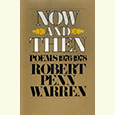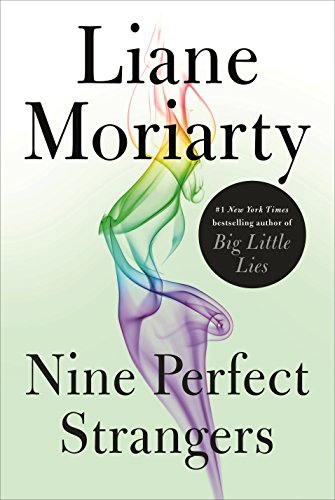Story Bound
Handmade & Bound, a book-arts festival at Watkins College, kicks off a new tradition in Nashville
Autumn is the season when the publishing industry traditionally produces its biggest crop of new releases, but for book-lovers in Nashville, this fall offers even more. From the Southern Festival of Books to new bookstore openings to a number of book-centric art exhibits, this is the most exciting season for books that Nashville has seen in some time, and Watkins College is adding to the excitement with Handmade & Bound Nashville, which will be held on September 30 and October 1.
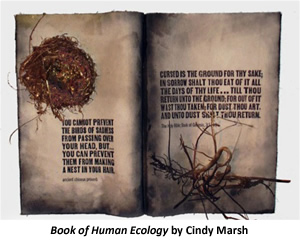 Part artisan festival and part literary convention, Handmade puts the emphasis on small presses, do-it-yourselfers, and one-of-a-kind publications designed to remind readers of the pleasure of feeling real pages against their fingertips. The first event of its kind at the college, Handmade will host book artists, comic-book authors, indie distributors and publishers, as well as film screenings, discussions, workshops, and a juried book-art exhibition that will run through most of October.
Part artisan festival and part literary convention, Handmade puts the emphasis on small presses, do-it-yourselfers, and one-of-a-kind publications designed to remind readers of the pleasure of feeling real pages against their fingertips. The first event of its kind at the college, Handmade will host book artists, comic-book authors, indie distributors and publishers, as well as film screenings, discussions, workshops, and a juried book-art exhibition that will run through most of October.
The festival is being organized by the librarians and staff of the library at Watkins College, the Linebaugh Public Library in Murfreesboro, and a number of local book artists. Both libraries boast unusually appropriate collections for an event like Handmade, and it makes sense for the two institutions to join forces to make some noise about book artists and artisans, zine-makers, printers, and the Tennessee readers who love them. “It originally started as the brainchild of myself and Jerianne Thompson,” explains Lisa Williams, director at the library at Watkins College. “Jerianne was the librarian at Linebaugh Public Library in Murfreesboro as well as the editor of Zine World. She had also been teaching the [zine] workshops for me [at Watkins].”
It’s no exaggeration to call Thompson the godmother of Middle Tennessee’s zine scene, and though she recently took a new library position in Portland, Oregon, her influence looms large over the festival. It’s hard to imagine the emergence of an event like Handmade if not for the years of effort she put into promoting a do-it-yourself publishing culture in the region. While Thompson was in Murfreesboro, she established the library’s zine collection—the first of its kind in Tennessee. According to Thompson’s definition on the library’s website, a zine is a “self-published, small-circulation, non-commercial booklet or magazine, usually produced by one person or a few individuals.” While a zine may be about any subject, the form’s origins in the punk-rock communities of the 1970s generally define zines as marginal, subcultural publications that freely appropriate images and art from popular sources. Zines often employ a cut-and-paste—with real scissors and real paste—aesthetic. They tend to be reproduced through photocopying and are generally bound with staples.
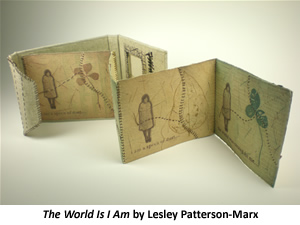 With Thompson’s departure, Annie Herlocker, another organizer with ties to both institutions, has now stepped up to play a part in all of the excitement. Herlocker is only weeks into her new job as Collection Development Coordinator at Linebaugh, and while she’s only just beginning to come to grips with the massive, diverse zine collection that Thompson curated, she seems most excited about the festival as an opportunity to celebrate and educate readers about the art of bookmaking. “Not a lot of people know what an artist’s book is,” explains Herlocker. “They don’t know that bookmaking can be thought of as a fine art.”
With Thompson’s departure, Annie Herlocker, another organizer with ties to both institutions, has now stepped up to play a part in all of the excitement. Herlocker is only weeks into her new job as Collection Development Coordinator at Linebaugh, and while she’s only just beginning to come to grips with the massive, diverse zine collection that Thompson curated, she seems most excited about the festival as an opportunity to celebrate and educate readers about the art of bookmaking. “Not a lot of people know what an artist’s book is,” explains Herlocker. “They don’t know that bookmaking can be thought of as a fine art.”
In book arts, as Stephen Bury notes in Artists’ Books: The Book As a Work of Art (Scolar Press, 1995), the physical book itself—and not merely the words inside it—is intended to be a work of art. Some book artists offer innovative approaches to traditional bound and printed pages, but other book arts take the form of scrolls, pop-up books, or even just loose, text-related items presented in a container of some sort.
Artists were always involved in the creation of early books, but the printing press made them no longer necessary. Medieval volumes like the illuminated Book of Kells are now considered artists’ books, but it’s William Blake’s groundbreaking poetry collection from the late eighteenth century, Songs of Innocence and Experience, that is most often cited as the earliest direct antecedent of the contemporary form. Blake and his wife Catherine wrote, illustrated, printed, colored, and bound the book themselves, presaging the small-press, limited-edition printings that are still typical of the form. Blake’s decision to blend his images and text into a single design was unprecedented, and the same presentation continues to be a hallmark of artists’ books today.
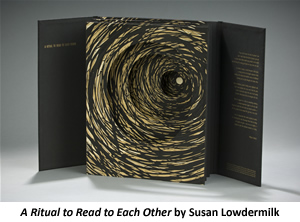 Handmade & Bound Nashville kicks off with an opening reception in Watkins’s Brownlee O. Curry Jr. Gallery for Encoded Structures: Interpreting the Story, an exhibit of artists’ books that were chosen from hundreds of entries from around the country. “We hope to make some of the books available for people to pick up and handle,” says Herlocker. “The size of the book, the texture of the paper that’s used, its weight, everything about an artist’s book speaks to the experience of interacting with that book.” This element is essential in a display of books that are about more than reading: “It’s engaging to people,” Herlocker says. “They move beyond the words on the page and come into contact with the book itself.”
Handmade & Bound Nashville kicks off with an opening reception in Watkins’s Brownlee O. Curry Jr. Gallery for Encoded Structures: Interpreting the Story, an exhibit of artists’ books that were chosen from hundreds of entries from around the country. “We hope to make some of the books available for people to pick up and handle,” says Herlocker. “The size of the book, the texture of the paper that’s used, its weight, everything about an artist’s book speaks to the experience of interacting with that book.” This element is essential in a display of books that are about more than reading: “It’s engaging to people,” Herlocker says. “They move beyond the words on the page and come into contact with the book itself.”
In addition to plenty of opportunities for buying, selling and trading, Handmade will give visitors a chance to read between the lines, learning about the book-making process and participating in demonstrations and workshops that explore the world of carved wooden books, book restoration, online indie-publishing resources, DIY pop-up books, zine-making, and booths that will offer book-related objects, like jewelry, for sale. “It really is an all-ages thing,” says Herlocker. “This is something that spans all generations.”
Williams hopes Handmade and Bound won’t be a one-time event. “We’d like to plan on doing this every year. This one is what we are calling ‘the first annual.’”
[updated on October 4, 2012, to reflect details for the second annual event, below.]
Handmade & Bound will be held at Watkins College of Art, Design & Film in Nashville October 5-6. Please click here for a complete schedule of events.
